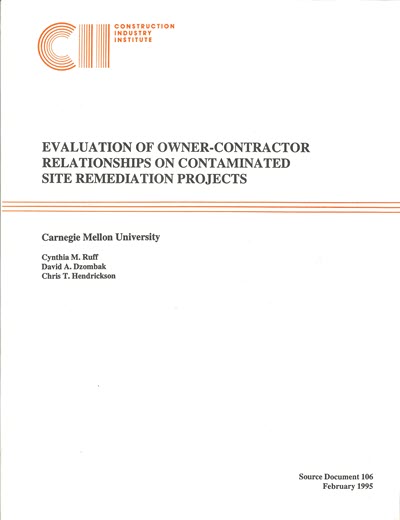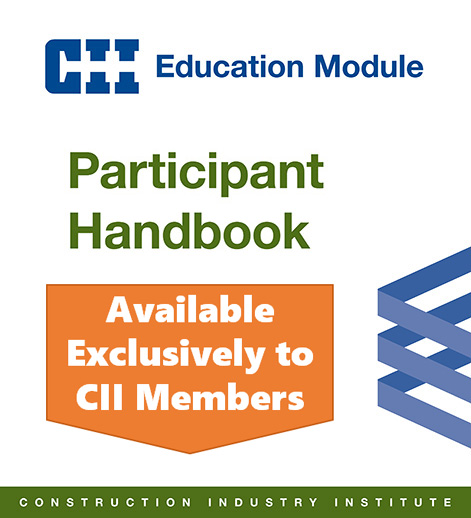
Evaluation of Owner-Contractor Relationships in Contaminated Site Remediation Projects
This source document presents the results of an investigation of owner-contractor relationships on site remediation projects. Contracting and management issues specific to remediation projects were examined. The research was performed under the guidance of the Construction Industry Institute Environmental Remediation Task Force.
Objectives
Primary objectives of the research were:
- To identify features that make remediation projects unique with respect to project management requirements and owner-contractor relationships.
- To elicit information on experience to date with owner-contractor relationships employed in remediation projects.
- To identify project management structures and contracting schemes best suited to remediation projects.
Methods
The methods used to achieve the objectives were:
- Literature review and discussions with the task force to determine the areas of project management and contracting that exhibit unique requirements with respect to remediation projects.
- A survey to elicit experience with completed remediation projects regarding owner-contractor relationships and contracting strategies. Information on 60 projects was obtained.
- Survey data analysis and follow-up telephone interviews to determine trends in the data and clarify issues raised by the survey responses.
- Identification of owner-contractor organization schemes and contractual arrangements that are most conducive to the successful completion of remediation projects.
Conclusions
The survey data, comments made on the surveys, and telephone interviews led to conclusions about the problems frequently encountered on remediation projects and about the impacts of different management structures and contracting schemes on project outcome. Primary conclusions are summarized as follows:
- Problems on Remediation Projects. Budget overruns, delays, disputes, and change orders were common occurrences on the remediation projects studied. These problems most often resulted from changes in project scope due to unanticipated amounts and/or types of contamination.remediation contractor, or
- The owner contracting with a designer who hires the remediation contractor. The traditional structure in which the owner contracts separately with both the design and construction firms had the worst performance overall.
- Payment Structure. The majority of projects employed either a lump sum (28/60) or a cost-plus-fee (21/60) payment structure. Multiple payment structures were used on several projects (11/60) to protect the owner and contractor from some of the risk and uncertainty involved in remediation projects.
- Incentive Plans. Only 7/60 projects used some form of positive incentive plan, while 12/60 projects used liquidated damages, a negative incentive. Incentives were not used at all on 34/60 projects. In projects where incentives were employed, they had only minor effects on project outcome.
- Working Relationship. A combination of communication, trust, and professionalism, sometimes formalized by team building and partnering, were frequently cited as essential to effective working relationships. Team building and partnering enhanced project success, but were used only on a small number of projects.
- Owner Involvement. A high level of owner involvement generally had positive impacts on projects (better communication, cost control, etc.), though problems encountered on some projects indicate that owners should limit their participation according to their level of knowledge about site remediation.
- Communication. Communication among the parties during all stages of the project was identified as important to improved constructability, reduced number of disputes, and maintenance of budget and schedule.
- Project Scope. Definition of project scope was identified as an important contributor to project success. Results indicated that changes in scope are common on remediation projects, and that flexible project management strategies and contracts are better suited to accommodate such changes.
- Contract Flexibility. Contracts with flexible elements (e.g., unit prices for uncertain amounts) were found effective for handling uncertainty in the amount and type of contamination present, and in subsurface conditions.
- Risk Allocation. The survey data indicate that attempts to allocate risk equitably help avoid disputes and help to create a positive working relationship among the parties involved in the projects.
- Site Investigation. An adequate site investigation appears to be important for on-budget project completion. However, the survey results indicate that an adequate site investigation does not guarantee on-budget or on-time completion.



